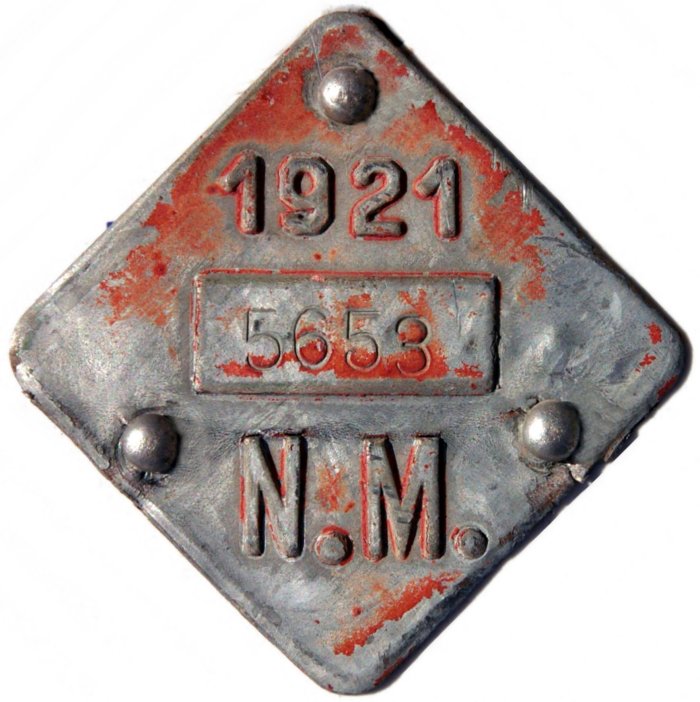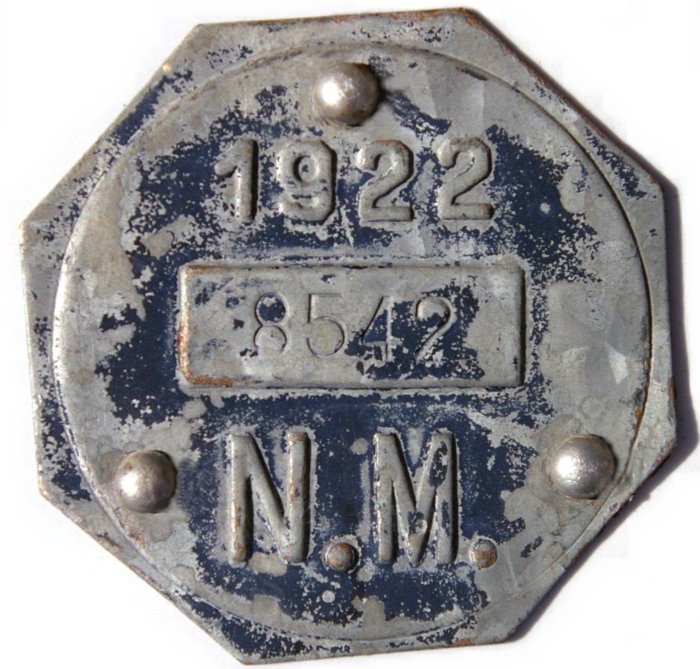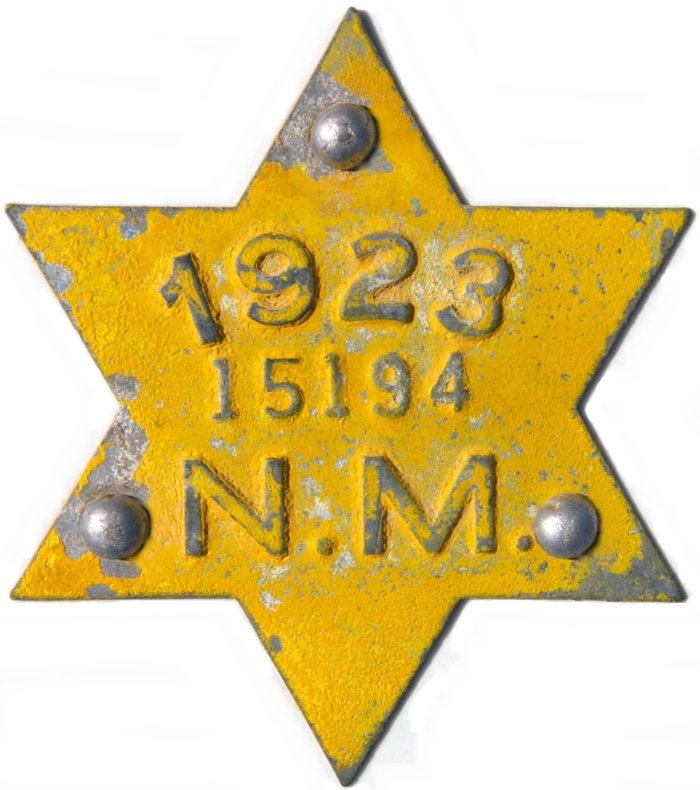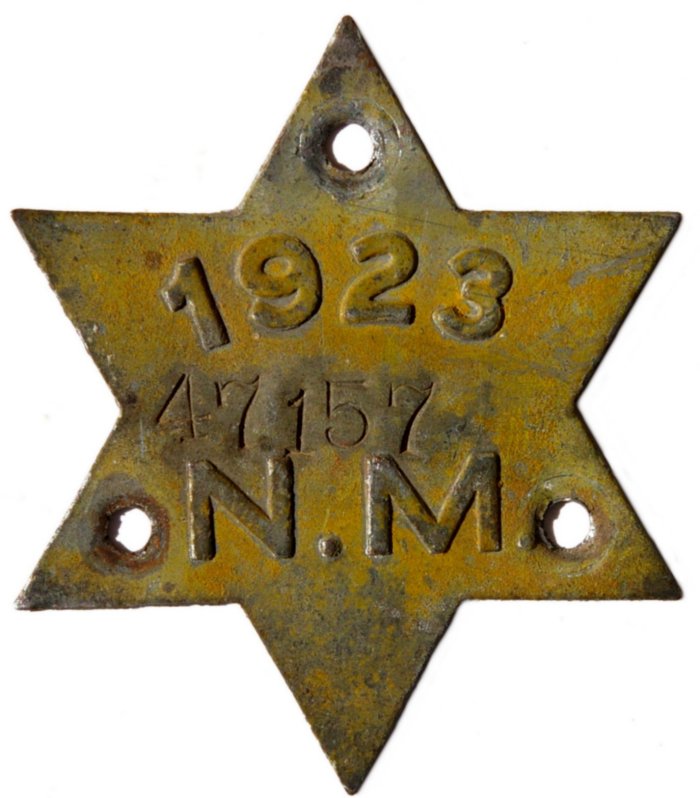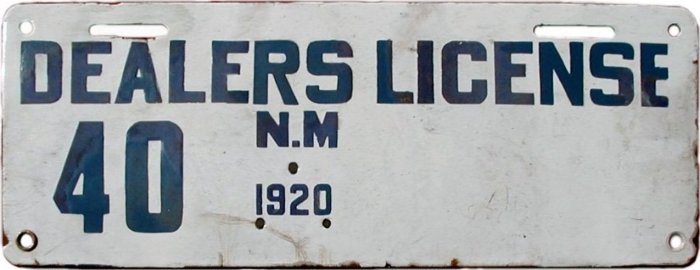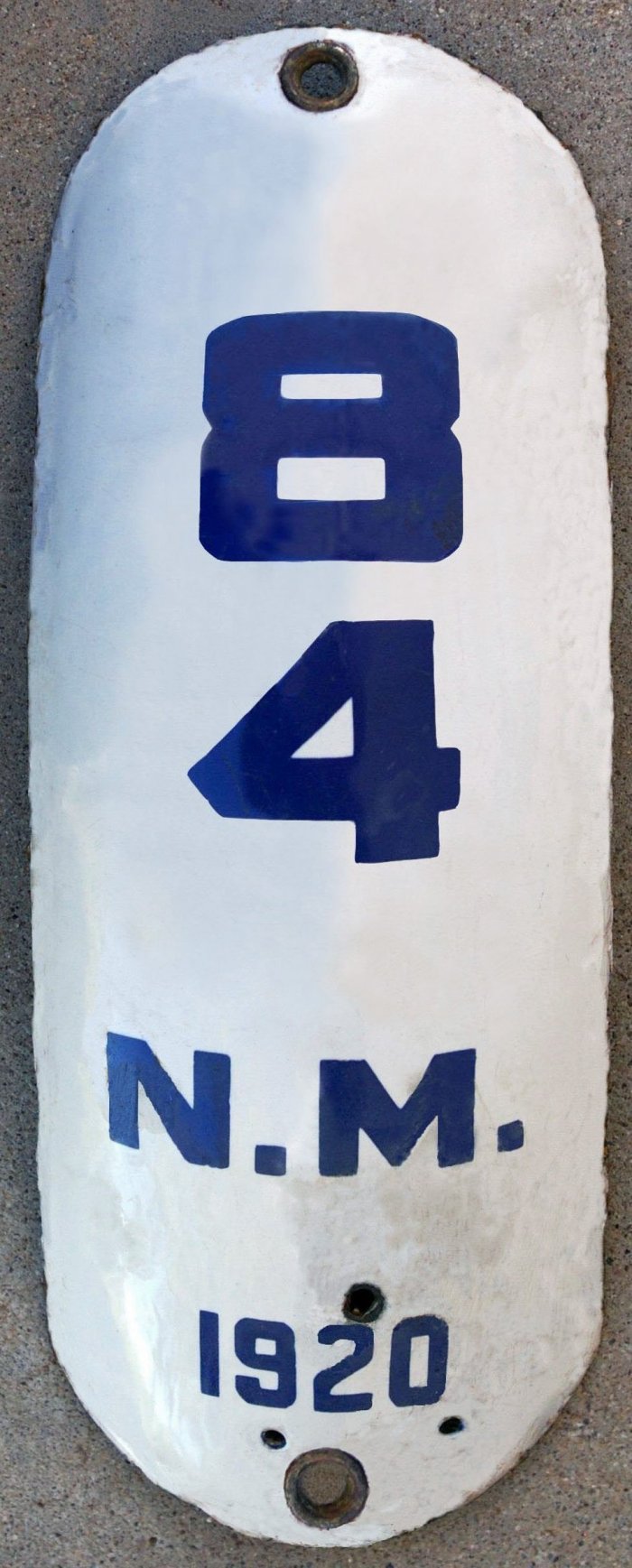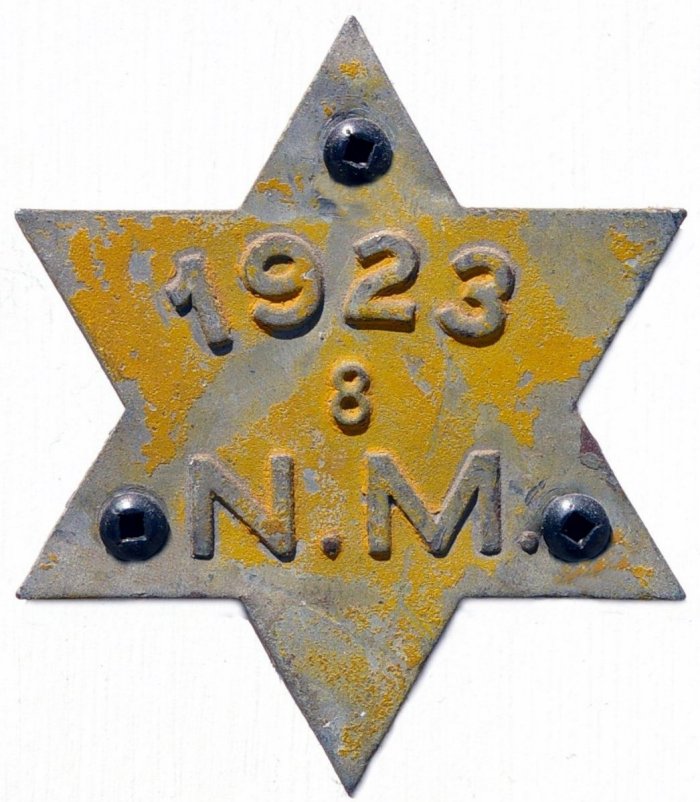The validation seals were a different shape and color each year—red diamond for 1921, silver octagon for 1922, yellow star for 1923—and had their own serial numbers. A newly-issued plate in each of those years had a serial number on the seal that matched the plate’s serial number. Plates that were carried over as renewals from a previous year had seals with non-matching numbers.
Because the seals were removable they were easily stolen by persons hoping to evade the annual registration fee, resulting in considerable grief to law abiding citizens, not to mention massive loss of license fees to the state. Because of this a decision was made to terminate use of the porcelain plates after only four years and revert to regular embossed steel plates in 1924. (A secondary reason was that the porcelain proved to be easily chipped from road hazards, rendering the plates partially or wholly unreadable.)
Porcelain plates were issued in four types: Passenger (which included trucks), Motorcycle (which, incidentally, were uniquely shaped, like a section of a motorcycle fender), Dealer, and Highway Department. This last type, bearing the unique “HWY DEPT” designation, was not initiated until mid-year of 1923, so were used for only six months. (These vehicles had been using regular “civilian” porcelain plates since 1920.)
The last thousand or so plates handed out in 1923 were made without rivet holes for attachment of seals, as by that time it was already known that the plates would not be reused in 1924. But the majority of porcelains in use during 1923 had the star-shaped seals on them when taken off the car, and for that reason are most often found in that configuration. This circumstance has caused countless individuals who encounter these plates today to believe that they are “sheriff” plates. But all 30,000 porcelain plates had the same yellow star, and we can assure you that there were not 30,000 sheriffs in the state, and certainly none in the Highway Department or among car dealers.
Note: The renewal/validation seals used on the porcelain plates are commonly called “tabs” today, but during the years they were in use the only name applied to them was “seal.”


